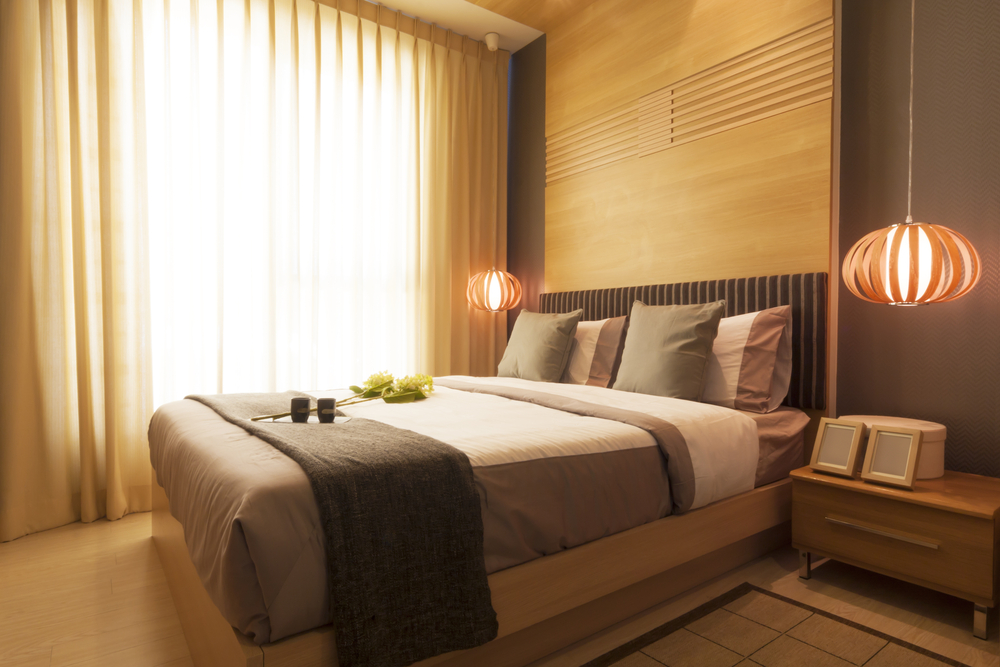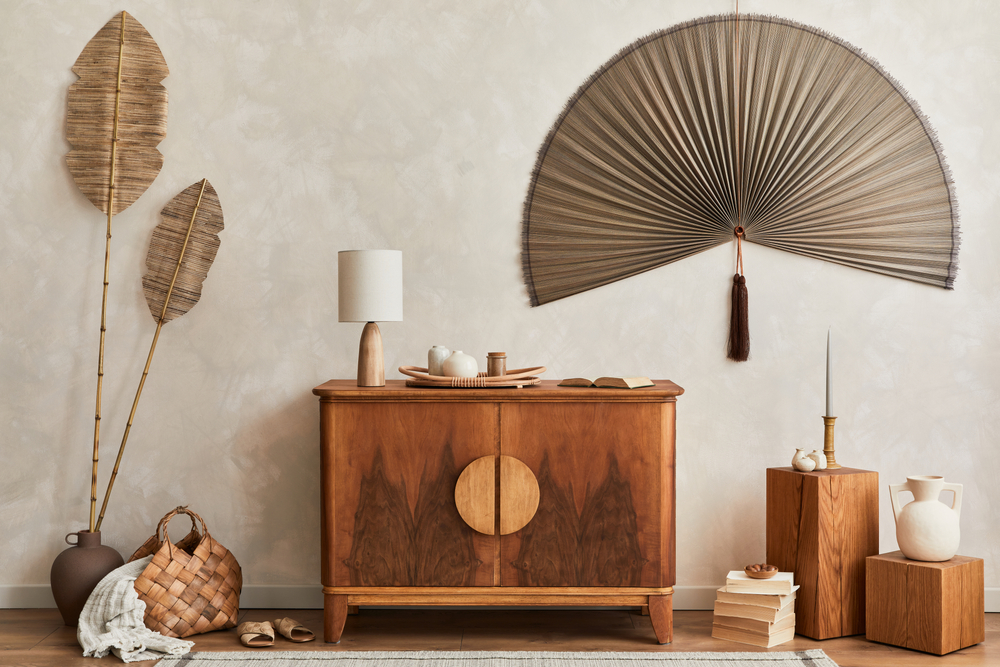Japanese design strongly emphasizes practicality, simplicity, and a close relationship with the natural world. The main goal of minimalist design is to instil a sense of peace and reverence for the natural world. This style is characterized by two main elements: harmony with nature and minimalism.
By emphasizing essential elements, creating uncluttered spaces, and using clean lines, minimalism helps to develop a sense of order and tranquillity. Contrarily, harmony with nature uses organic materials, lighting, and other components, making distinguishing between indoor and outdoor spaces difficult. Japanese home decor promotes tranquillity and well-being in the living area by adhering to these basic ideals.
The Allure of Minimalism
Adopting a minimalist style for home décor has many advantages. First, it gives the living area a feeling of serenity and tranquillity. Minimalist design reduces visual stimulation by removing extraneous furniture and clutter, which helps people unwind and feel less stressed. Second, minimalism clears the mind and increases concentration. The mind can focus on tasks or just take in the surrounding peace when fewer objects are vying for your attention.
A minimalist approach also improves living comfort and functionality. Clean lines and uncluttered areas encourage easy movement and navigation throughout the house, and multipurpose furniture maximizes functionality without compromising style. Ultimately, minimalist design can highlight each piece’s beauty and quality. Each item can be carefully selected for its form and purpose, creating an aesthetically beautiful and useful space.

Harmony with Nature
A fundamental element of Japanese home design is the idea of harmony with the natural world. The goal of various manifestations of this philosophy is to establish a smooth transition between interior space and the outside environment.
First and foremost, natural light is extremely important. The interior is frequently flooded with sunlight from large windows and skylights, making it difficult to distinguish between inside and outside. This gives off an air of spaciousness and offers the health advantages of natural light. Moreover, a smooth indoor-outdoor flow is promoted by using shoji, the traditional Japanese sliding doors of translucent paper. Shoji provides an aesthetically pleasing connection with the external environment, preserves privacy, and lets natural light into the room.
Natural elements are heavily incorporated into Japanese home decor beyond light and physical connections. It’s common to see wood, stone, and other organic materials used for accents, flooring, and furniture. These materials create a feeling of connection with nature by bringing the warmth and texture of the natural world into the living area. Furthermore, the thoughtful arrangement of houseplants gives the interior a hint of vitality and life. In addition to cleaning the air, plants promote peace of mind and well-being.
Lastly, bringing nature indoors through artistic representation is widely accepted in Japanese culture. The traditional Japanese flower arrangement technique known as ikebana emphasizes symmetry and simplicity to achieve a pleasing balance between the flowers and the container.
Bonsai trees, carefully grown dwarf versions of mature trees, symbolize the patience and beauty found in nature. Similarly, Zen gardens are tiny, meditative depictions of nature inside homes made of rocks, sand, and occasionally tiny plants. These creative expressions enable a closer relationship with the natural world even in a small space.
Creating Your Own Minimalist Oasis
You can easily create a peaceful and tranquil haven in your home by implementing the principles of Japanese home decor.
#1 Embrace Minimalism
Organizing and giving functionality top priority is the first step. Examine your possessions and eliminate anything that is unnecessary or doesn’t make you happy. Only things that are functional or have sentimental significance should be kept. Make practicality and aesthetic appeal your top priorities when choosing furniture and décor.
Invest in long-lasting, high-quality items. Quality is prioritized over quantity in minimalist design. Select well-made furnishings and décor that are composed of sturdy materials. These pieces will add lasting value to your space and improve its aesthetics.
Use hidden storage solutions to keep things organized and reduce visual clutter. Sliding door cabinets, built-in shelving, and ottomans with storage sections are all great ways to maximize functionality without sacrificing your room’s tidy, uncluttered feel.
#2 Inviting Nature In
Making the most of natural light is crucial. During the day, open your blinds and curtains to let the light stream into your living area. If at all possible, think about adding skylights or bigger windows. In addition to making the room brighter, natural light makes it feel cosier and more positive.
Use houseplants as décor to give your house more life and brightness. In addition to cleaning the air, plants promote peace of mind and well-being. Select low-maintenance types based on lighting conditions and lifestyle.
Lastly, think about using natural materials for accent pieces and furniture. Natural elements such as wood, stone, bamboo, and other organic materials infuse your living space with warmth and texture. These materials foster tranquillity and calmness and a sense of connectedness to nature.
Conclusion
Japanese home décor provides a classic method for designing a beautiful and useful living area. You can create a sanctuary of calm and serenity in your own house by adopting minimalism and encouraging harmony with nature. It is easy to incorporate the fundamental ideas of functionality, simplicity, and connection to the natural world, which will help you create a mindful and well-being-oriented living space in your own personal paradise.





